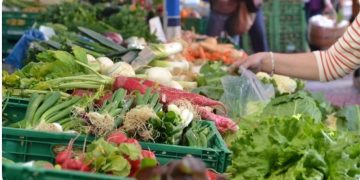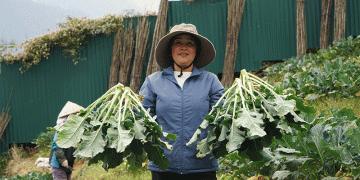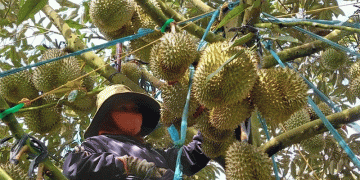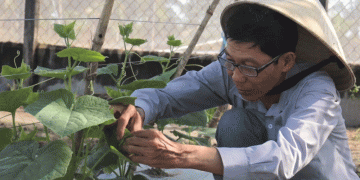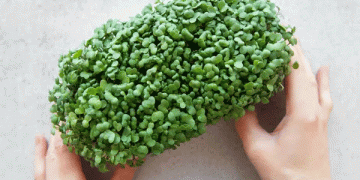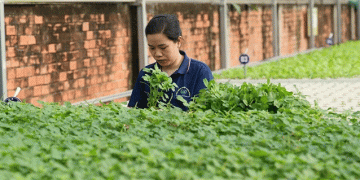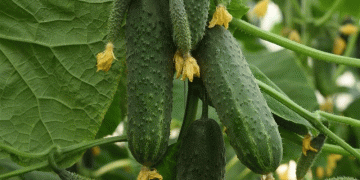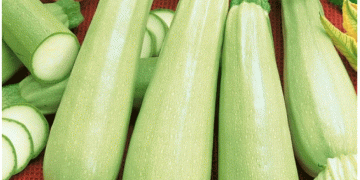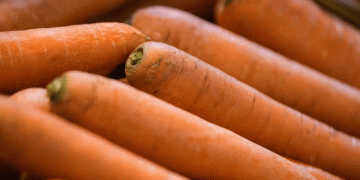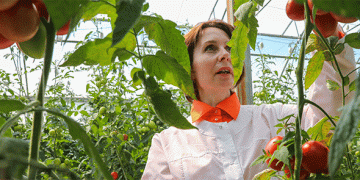Vegetable market in India, How to start vegetable export business: Fresh fruits and vegetables of all varieties thrive in India’s many climates. Consequently, it ranks second in fruit and vegetable production after China. During 2019-20, India produced 99.07 million metric tonnes of fruits and 191.77 million metric tonnes of vegetables, according to the National Horticulture Database (Second Advance Estimates) published by the National Horticulture Board. Planting fruit accounts for 6.66 million hectares, while planting vegetable accounts for 10.35 million hectares. Based on the latest FAO (2019) statistics, India ranks second for potatoes, onions, cauliflower, Brinjal, cabbage, etc., in the world of vegetables. Among fruits, it ranks first in banana production (26.08%), papaya production (44.05%), and mango production (including mangosteens and guavas) (45.69%). In India, there are tremendous opportunities for exports due to the vast production base. During 2020-21, exports of fruits and vegetables from India were worth Rs. 9,940.95 cores/ 1,342.14 USD Millions, which comprised of and vegetables worth Rs. 4,969.73 cores/ 667.61 USD Millions, fruits worth Rs. 4,971.22 cores/ 674.53 USD Millions. Grapes, pomegranates, bananas, mangoes, oranges make up a significant portion of the fruits exported from the country.
Moreover, Onions, Mixed Vegetables, Potatoes, Tomatoes, and Green Chilies make up the bulk of vegetable exports. It is common for Indian vegetables to go to Bangladesh, UAE, Netherlands, Nepal, Malaysia, UK, Sri Lanka, Oman, and Qatar. Horticulture produce from India is increasingly being accepted globally, although India’s share is only about 1%. A combination of advancements in cold chain infrastructure and quality assurance measures has enabled this to happen. The public sector has also invested and taken initiatives, apart from the private sector. In the country, several facilities for handling post-harvest perishables have been established with the assistance of APEDA. Capacity-building initiatives have also been implemented at the levels of farmers, processors, and exporters.
A guide to vegetable market in india, and how to start vegetable export business
The common element of human nutrition is the vegetable, so widely consumed that a meal without a vegetable is considered incomplete in any culture. They are grown on about 6 million hectares, representing 3% of all areas cultivated. As recommended by the dietician, the vegetable requirement is 300 grams/day/person. However, we only managed to meet about 1/9th of that goal. Vegetables are introduced from other countries to India in large numbers. Improved vegetable production will help meet India’s food supply needs while improving the nutritional requirements of the masses. The small cultivable area may be best suited for growing vegetables that yield more per unit area. Growing vegetables can also create significant employment opportunities due to their labor-intensive nature. In one part of the country, we enjoy various AGRO-climatic conditions that promote vegetables throughout the year, maintaining a continuous supply of fresh vegetables.
A variety of vegetables are found in Indian markets
The home market and neighboring Gulf countries are in great demand for these vegetables during the off-season. There are about 40 different types of vegetables grown in India. Vegetables can be classified as Underground Vegetables, Herbage Vegetables, or Fruit Vegetables for convenience.
Vegetables with Underground Parts: These vegetables store their food underground. Vegetables underground have two main components: underground roots and underground stems, e.g., Solanum tuberosum (Sweet potato), Yam, Beta vulgaris (Beetroot), Daucus carota (Carrot), etc.
Herbage Vegetables: Generally, the edible portion of these plants is the fruit, and hence they are called fruit vegetables. 3 Fruit, Vegetables: The edible component of this group consists of fruits. The planted varieties are Tomatoes, Solanum Melongena (Brinjal), Peppers, Chilies, Okra, Melons, and Gourds. In recent years, large-scale vegetable cultivation has gained popularity on farms located far from consuming centers. Recently, many varieties of vegetables, both for eating and processing, have been released. It has been developed creative ways to manage soil, water, fertilizer, and vegetable crops. Different cropping patterns have been adjusted for new varieties of vegetables in crop calendars.
The transplanting of cucurbits to increase production and developing a seed-plot technique to produce virus-free potato seeds in the plains of north India have been developed. As a result, the country’s vegetable production has increased as technology advances in this sector. 60% of the total vegetable production in Japan comes from potatoes, tomatoes, onions, cabbage, and cauliflower. With the ever-growing population of our country, vegetables, including root and tuber crops, play an increasingly important role in food and nutritional security. The cultivation of vegetables in India includes 40 kinds belonging to different groups. The following vegetables belong among these categories: solanums, Cucurbitaceae, leguminous plants, cruciferous plants (corn), root vegetables, and leaves. In addition to tomatoes, onions, and brinjals, cabbage, cauliflower, okra, and peas. There have been significant gains in production since 1991-92, which reached 58.5 million tons. During 2000-01, the count grew to 93.9 million tons. Bihar and West Bengal are the states with the highest potato production, followed by Uttar Pradesh. According to production, tomatoes come in second place among vegetable crops.
Andhra Pradesh is the leading tomato producer. In addition to these states, tomatoes are also grown in Bihar, Karnataka, Maharashtra, and Orissa. In terms of vine crops, Brinjal is ranked third. The state with the highest production of Brinjal is Maharashtra, followed by Bihar. Another growing state is Karnataka, Maharashtra, Gujarat, and Assam and Madhya Pradesh. Our country produces the fourth most significant amount of cabbage. Cabbage is produced most extensively in India. The state of West Bengal is the largest grower of cabbage. The state of Orissa comes in second, and the state of Bihar comes in third. In addition to Gujarat and Assam, these other states are also notable Cabbage growers. Additionally, Onion, Chilies, Peas, Beans, Okra, Cabbage, Cauliflower, Pumpkin, Bottle gourd, Cucumber, Watermelon, Palak, Methi, Carrot, and Radish are grown.
The Step-by-Step Guide to Starting an Indian Vegetable Export Business
One of India’s quickest and most lucrative developing industries has been the vegetable business in recent times. There is an increase in the demand for frozen vegetables worldwide, mainly because of their high quality. As a result, exports of vegetables, pickles, mushrooms, and other similar goods are in high demand, offering substantial investment opportunities. India has long been considered the leading producer of okra and ginger and is ranked second in Brinjals, Cabbages, Onions, Potatoes, Cauliflowers, etc. Thus, India has a very suitable climate for the cultivation of vegetables. Moreover, it has been geologically positioned to enjoy a wide range of export opportunities in Japan, Malaysia, Korea, and the Middle East.
1. Following are some guidelines to get started in a business that exports vegetables: Upon registration, a ten-digit international economic code number will be provided to you by the Director-General for Foreign Trade (DGFT) of the Ministry of Commerce. Then, filling out and submitting the ANF2A form is the next step. In addition, you will need to submit a PAN card and your bank account details, and a banker’s certificate of Rs. 1,000. Last but not least, you must register with the Export Promotion Council (EPC) and commodity board to export outside of the country.
2. Get an office set up: Offices can be in prime locations with houses, busy markets, or industrial areas. Even start your own online business.
3. Find Suppliers: Make contact with Indian suppliers as soon as possible. Getting in touch with an Indian embassy or chamber of commerce is one way to search for contacts abroad. After getting the contact information, contact the supplier, introduce yourself, and discuss export opportunities.
4. Clients to search: Use your services to find foreign sellers. Then, determine the price you will charge based on the competitor/s in that country. For example, the top countries buying vegetables from India are Spain, Germany, France, England, Pakistan, and Saudi Arabia.
5. The dealer, distributor, or representative search and hire service: A commission-based overseas agent is the best way to be safe and run your business smoothly. Furthermore, you can also help consultant firms or the Chamber of Commerce of that country to find a reliable agent.
6. Packaging and shipping of the product: The final phase of the export process has been considered. So, the product needs to be packaged and labeled before it is shipped. Another option is to hire a shipping company or a freight forwarder.
Market developments for fresh vegetables in India
Although the Indian economy is experiencing a downturn, demand for fresh produce (incredibly premium produce) is stable and is primarily focused on health. On the other hand, E-commerce and food delivery have taken a beating but are likely to rise. Therefore, it may be necessary to change market approaches.
Demand developments for consumer goods: In India, incomes rise, and income inequality is high (the top 20% receive 45%). The use of mobile devices and internet penetration has increased significantly (560 million mobile subscribers, 354). Bangalore, Hyderabad, and Chennai are fast becoming urbanized. As social structures and norms change, the demand for easier-to-use products, premium items, and shortcuts for decision-making will increase. In addition to local stores, consumers increasingly shop online. While fast-paced lives contribute to a demand for nostalgia and ‘Made in India’, more straightforward choices are also in demand. With more consumers eating out, healthier choices are expected to be more critical.It varies from city to city how the trade lockdown has affected fresh produce in India. The largest ports in India are congested because importers and customs house agents cannot take their consignments out of the container freight stations.
Furthermore, cold storage products can be difficult to distribute to consumers. India’s apple market is slower than usual this year, but trade issues are expected to be resolved, and the mango season will end this summer, resulting in an improved market in June/July. Citrus products are in demand due to the benefits they may bring to the immune system.Long-term, the sector is expected to grow strongly. Most of India’s top 20 percent live in big cities and have been little affected by the recession. Therefore, there is no reason to expect them to reduce spending on food items significantly.
Channels of marketing and sales: eCommerce sales have soared (though delivery staff shortages persist), and home cooking has boomed. Marketers are likely to focus on health credentials, while packaging will adapt to fit the needs of smaller households and convenience products (such as fruit bowls on SWIGGY). The subscription model is gaining popularity. Kirana’s (neighborhood stores) have rediscovered their popularity. In July, Facebook announced it had invested 5.7 billion dollars in India’s Reliance Jio Platforms, the largest and most valuable public company in India with a 3.5-year history. Facebook is considering linking WhatsApp (400 million users in India) to Jio Mart (a joint venture between Jio and India’s largest retail chain, Reliance Retail).The Indian government recommended that states suspend some agricultural produce marketing committees (APMCs) to encourage direct crop marketing rather than rural markets. As a result, some bulk buyers have started buying directly from farmers to secure an uninterrupted supply of fruits and vegetables.
Furthermore, ENAM (electronic national agriculture market, a pan-India electronic trading platform for farmers) is increasingly used for agricultural information and services (commodity arrivals, quality, and prices, electronic payment settlements directly into farmers’ accounts). The government plans to connect all markets to the platform in the financial year 2021-22. In addition, the Agriculture Ministry has set up a call center to ease the difficulties in Agri logistics, particularly the inter-State movement of perishable vegetables and fruits. We expect several of these changes will last and will create opportunities since intermediaries will be cut out.
Weddings and smaller cities offer opportunities for introducing new products: In Madhya Pradesh, smaller cities such as Indore (2 million inhabitants) inclines to import fruits. However, local distribution presents a challenge. For example, in Mumbai and Indore, fruit sellers have difficulty storing their goods and have been forced to sell easier-to-store fruits such as (Washington) apples, representing 60 percent of the country’s imported fruits. A successful marketing plan focusing on taste has made Italian apples more visible in India. Is there anything the Netherlands can learn?
Furthermore, the demand for citrus, kiwifruits, pear, cherries, and avocado is increasing. Most new fruits are introduced through tourism, horticulture, and weddings. For smaller cities, cold chains and retail need to be improved.According to Covid19, some Indian farmers may switch over to government-backed field crops in the short term instead of vegetables. Thus, demand has declined for high-value fruits and vegetables (strawberries, basil, iceberg lettuce, bok choy). Growers are forced to use those products as manure or feed them to their cattle. Due to supply chain disruptions, farmers might have difficulty purchasing inputs until remittances increase and prices go up (even if they go down for the consumer).As covered cropping continues to grow, it will provide solutions to growing in hotter conditions. However, when linked to premium products, more costly solutions are sometimes possible. Pascal van ores of VEK ADVIESGROEP described covered cropping opportunities in India and challenges such as electricity shortages during FPI. Jan DOLDERSUM of Rijk Zwaan explained how they support Indian growers with training, technology, export assistance, and retail links.
Production of vegetables in India
In case if you miss this: How To Start Vegetable Container Gardening.
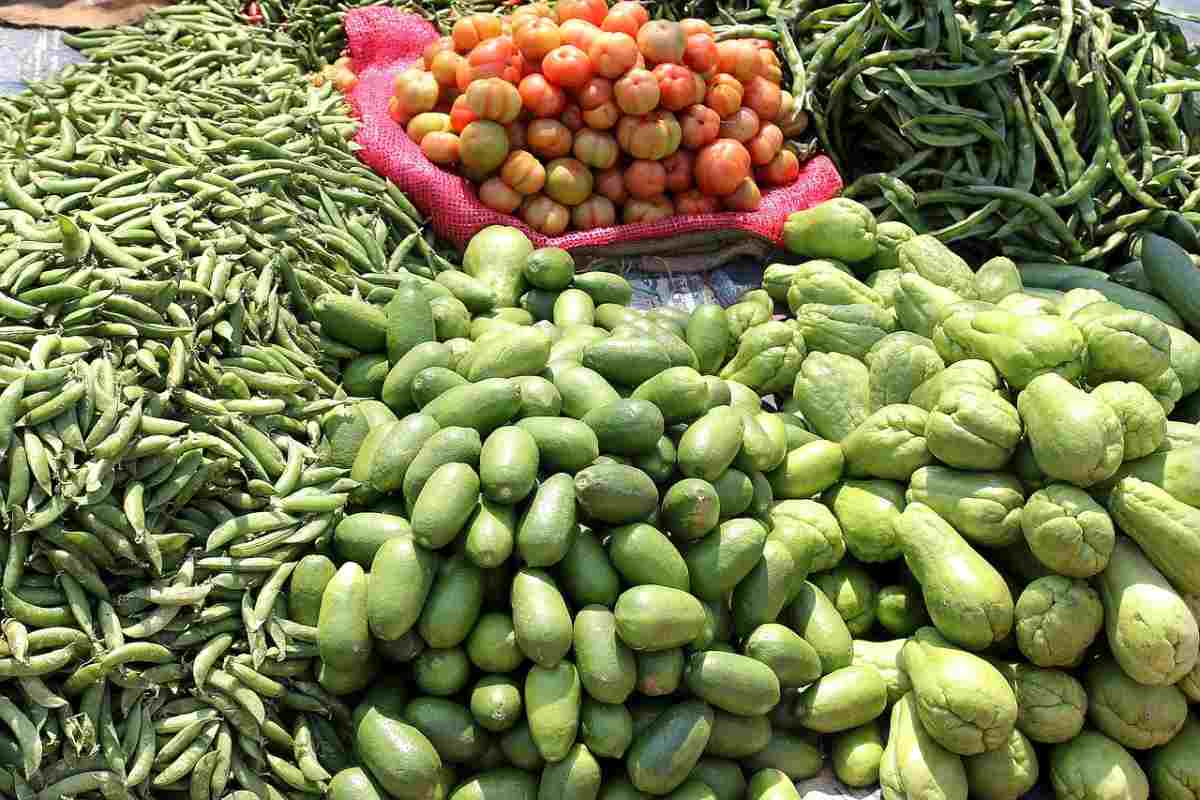
The highest increase in production has been seen in potato, the most widely consumed vegetable crop, with more than 10.55 percent. On the other hand, onion and tomato production is expected to grow marginally – Compared to last year’s production, onion production is forecast to reach 26.92 MT in 2020-21, and tomato production is forecast to reach 21 MT in 2020-21, up from 20.55 MT this year. According to estimates, total vegetable production was 196.27 MT in 2013 compared to 188.28 MT in 2012. Compared to last year, the fruit production is expected to be up to 102.76 MT. Fruit production in this region increased by 0.68 MT, primarily due to increased prominent fruits like Bananas, Mangos, and Jackfruit. Coconut production is estimated to increase to 14.63 MT in 2020-21 in states like Karnataka, West Bengal, and Tamil Nadu, making overall plantation crop production 16.60 MT, up from 16.12 MT this year. A rise of almost 4 percent in the production of spices is also projected for 2020-21, from 10.14 MT in 2019-20 to 10.54 MT. Chilies (dried), cardamom, coriander, and garlic are estimated to have grown significantly. However, turmeric and cumin production have dropped significantly.
Exotic vegetable market in India
According to estimates, the Indian exotic vegetable market will reach almost 322 million metric tons by 2020. By 2026, the Indian fruits and vegetable industry is expected to reach nearly 432 million metric tons, growing at a CAGR of 5% during that period. Increasing demand for exotic produce is driving the exotic vegetable industry in India, which is growing by 15 to 20% per year. Ranks are second in terms of fruit and vegetable production, with China being the largest consumer market. In the Indian fruit and vegetable market, vegetables account for more than half of the total revenue. There are several places in Goa, Pune, Gurgaon, and Mumbai that specialize in producing food. An estimated 5,000 million tons of fruits and vegetables from India are exported to Italy every year. Most of the country’s exports are onions and green peas, which it sends to the Middle East, including United Arab Emirates, Saudi Arabia, Qatar, the United Kingdom, and the USA. Vegetables classified as exotic are those cultivated in a land other than where they are native. For example, the Indian culture does not include many foods native to the country, such as broccoli, parsley, and cherry tomatoes. Although their seeds are imported, they are grown in favorable weather and climate conditions in the country. India’s exotic vegetable market is divided into the following categories according to variety:
- Broccoli
- Sweet Corn
- Coloured Capsicum
- Others
- Mushrooms-Button
- Cherry Tomatoes
- Zucchini
- Lettuce
- Baby Potatoes
- Purple Cabbage
Based on sectors, industries are divided into:
- Agricultural Sector
- Industrial Sector
Market distribution channels are divided into:
- Online
- Markets/Supermarkets
- Exports
- Retail Unorganized
- Others
- Based on the leading vegetable growing states in India:
- Uttar Pradesh
- West Bengal
- Madhya Pradesh
- Gujarat
- Bihar
- Others
The industry is categorized into four major categories based on the states’ leading consumption of vegetables:
- Maharashtra
- Bihar
- Uttar Pradesh
- West Bengal
- Madhya Pradesh
- Others
India’s fast-growing economy drives the market for exotic vegetables. In addition, a lot of agricultural products are also produced in India, which contributes to the market’s growth. To strengthen the market, the government has created and implemented several policies. As a result, corporate houses have boosted their investments in the exotic vegetable industry as demand increases. In addition, Indian officials offer incentives to investors, including favorable policies for direct foreign investment in trading, including through e-commerce, for food products made or produced in the country. Improved infrastructure also facilitates the growth of the Indian industry. The rapid growth in the international trade of vegetables stimulates the market growth of exotic vegetables in India. Fresh organic produce has also been a boon to the industry. Exports have also benefitted from the large production base in India. A large pool of highly trained workers ensures that the country produces far more than it consumes. Many farms will specialize in producing exotic vegetables in the coming years. It is projected that India’s rapidly growing foodservice sector will propel the industry to grow more rapidly. Exotic vegetables will also be sold online by e-retail platforms during the forecast period, which will support industry growth.
Commonly asked questions about Vegetable Market in India
How about this: How To Start Tomato Farming In Karnataka.
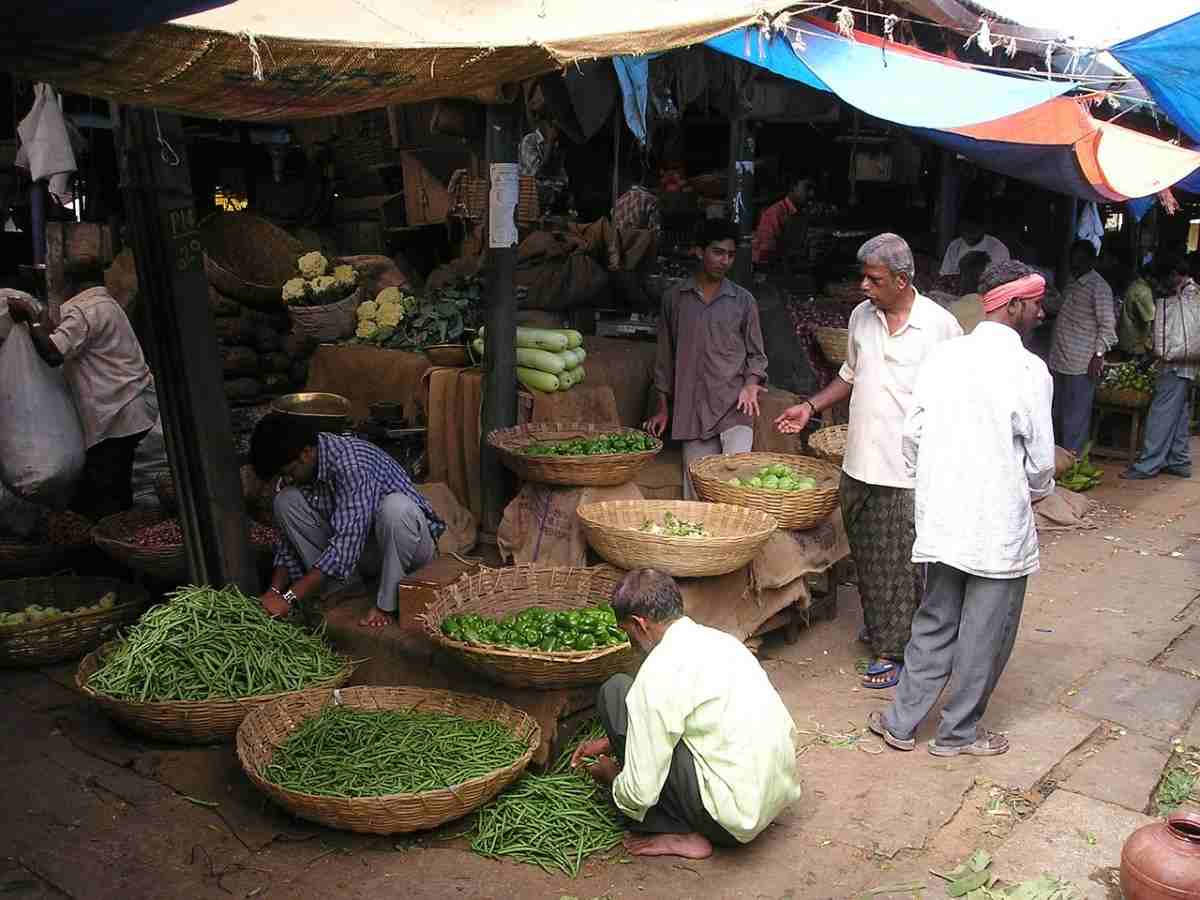
1. Where in India are the most vegetables produced?
In 2018, Uttar Pradesh accounted for 15.4 percent of all vegetables produced in India. With 15 percent, the state was ranked second.
2. Which vegetables are the most commonly grown in India?
Potatoes, onions, tomatoes, cauliflower, cabbage, beans, eggplants, cucumbers, garlic, and okra are vegetables grown in India.
3. What is the ranking of India’s vegetable production?
Fruits and vegetables are produced in China, making India a second-place producer in the world. In 2019-20, India produced 99.07 million metric tons of fruits and 191.77 million metric tons of vegetables, according to the National Horticulture Database (Second Advance Estimates) published by the National Horticulture Board.
4. What is India’s most popular vegetable?
Potatoes are India’s most popular vegetable, accounting for 20% of its vegetable spending. However, in large parts of India, onions are the most popular vegetable, as revealed by the headline figure of the all-India share in vegetable consumption.
5. What vegetables are the most expensive in India?
India’s 5 Most Expensive Vegetables.
- Asparagus.
- Bok Choy.
- Cherry Tomatoes.
- Zucchini.
- Parsley.
6. How many countries import vegetables from India?
Indonesia, Malaysia, Argentina, Ukraine, and the United States were the top partner countries India imports vegetables in 2019.
7. What are Indian vegetables good for health?
- Cabbage/PATTA GOBHI.
- French Beans.
- Cauliflower/ GOBHI.
- Bitter gourd/Karela.
- Fenugreek/METHI.
- Ladyfinger/Okra/Bhindi.
- Spinach/Palak.
- Ridge gourd/TURAI.
